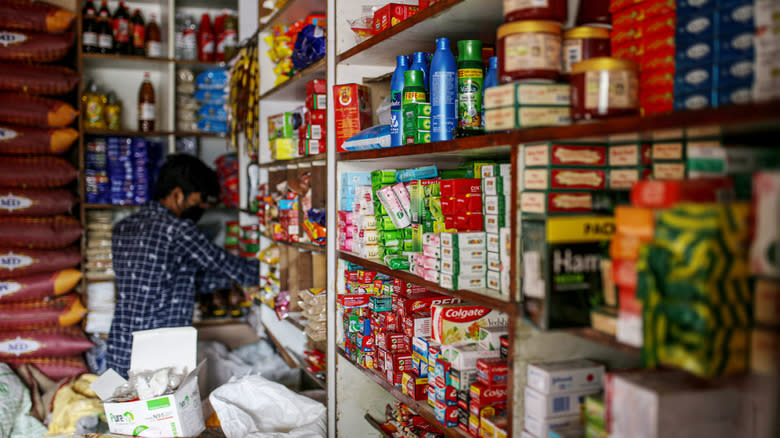If you are traveling to India for the first time, there will be a lot to take in — and some of the best advice you’ll get is to let go of any and all of your expectations. But, besides trying Indian dishes, traveling foodies in particular will have much to gain from taking a stroll into one of the country’s small grocery stores, also known as kiranas. There, you’ll find packed aisles and shelves of food products that have been precisely curated for the community by the community. It sounds like a pipe dream, but this is the norm in India, where Statista reports that over 95% of the food and grocery market is made up of small mom-and-pop shops.
Unlike in the U.S., where supermarket shelves are seen as real estate and sold to the highest bidders, the majority of the grocery stores you will come across in India aren’t stocked with the same big-name food brands. In fact, you may not find any one product from one shop to the next. That’s because the owners are a part of the community that they serve, and they make sure to build a personal connection with their customers. This way, they gain an unequivocal understanding of them and their preferences, enabling them to stock ingredients and snacks that fit into their lifestyles.
Read more: 14 Popular Chain Grocery Stores For Meat, Ranked Worst To Best
History Of India’s Mom And Pop Grocers
As the CEO of Reliance Retail, Damodar Mall, eloquently observed in an article for Forbes India, the terms e-commerce and omnichannel are commonly used as if they’re explaining a recent phenomenon. However, Indian kirana owners have been operating, and very much succeeding, within these business models for generations. The concept of the kirana was actually an evolution from India’s traditional open-air markets, locally referred to as haat bazaars. Much like the outdoor markets of other parts of the world, people from the nearby communities would gather and trade goods with the vendors. Many of India’s haats still operate to this day — namely in New Delhi, where you’ll find the famous Dilli Haat.
Families then began to open small stores known as kiranas within their own neighborhoods. By being even closer to the areas where people lived, they were seen as an added convenience — and that’s still largely and primarily how they function. Customers are able to call up their local store and ask for a product — no matter how specific — and have it delivered to their door, sometimes within hours. Or, since they’re likely to be passing by anyway, a slip of paper to the manager or a face-to-face request will also suffice. There’s also the added convenience of credit accounts, which allow the customers to pay at a time when it’s convenient for them, and, of course, the bonus of personal familiarity between the customer and the operator.
Competition In The Modern Day

As the world has become more and more digital, you might expect India’s kiranas to suffer — but, rather than succumb to the competition, kiranas have stood firmly in their place at the epicenter of the Indian grocery business. Still, that doesn’t mean they won’t need to adapt in the future. India has one of the youngest populations in the world, and it’s no secret that younger customers prefer the anonymity and efficiency that modern-day grocery delivery apps like Instacart, GrubHub, and DoorDash allow. What apps like these don’t provide, however, and what they’ve failed to replicate in the Indian market specifically, is something that the kirana owner holds near and dear to their heart: their personalized service.
In an ideal world, the apps would find a way to work directly with the kiranas. But it’s not as simple as it sounds. As opposed to the organized sector, kiranas operate under what is known as the unorganized sector of the food and grocery business. Integrating them into India’s rising e-commerce market would require the humble kirana to take on an entirely different level of operational costs. Instead, India’s kiranas seem to be taking modernization at their own pace. Many have begun taking orders via WhatsApp and accepting online forms of payment outside of cash. In the big cities, some independent online grocery-delivery services are gaining ground, such as Dunzo in Bengaluru. But the market still remains, and with $810 billion on the line, according to Indian Retailer — a vast majority of which is the kiranas’ current share — someone is sure to find a way to integrate the two.
Read the original article on Tasting Table.


